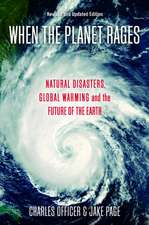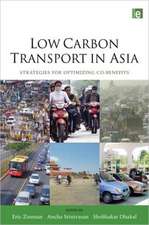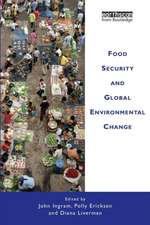Remote Sensing and Atmospheric Ozone: Human Activities versus Natural Variability: Springer Praxis Books
Autor Arthur Philip Cracknell, Costas Varotsosen Limba Engleză Hardback – 21 iun 2012
| Toate formatele și edițiile | Preț | Express |
|---|---|---|
| Paperback (1) | 1240.79 lei 6-8 săpt. | |
| Springer Berlin, Heidelberg – 23 aug 2016 | 1240.79 lei 6-8 săpt. | |
| Hardback (1) | 1248.02 lei 6-8 săpt. | |
| Springer Berlin, Heidelberg – 21 iun 2012 | 1248.02 lei 6-8 săpt. |
Din seria Springer Praxis Books
-
 Preț: 294.46 lei
Preț: 294.46 lei -
 Preț: 223.45 lei
Preț: 223.45 lei -
 Preț: 193.12 lei
Preț: 193.12 lei -
 Preț: 167.85 lei
Preț: 167.85 lei -
 Preț: 288.98 lei
Preț: 288.98 lei -
 Preț: 323.74 lei
Preț: 323.74 lei -
 Preț: 401.38 lei
Preț: 401.38 lei -
 Preț: 264.12 lei
Preț: 264.12 lei - 8%
 Preț: 513.00 lei
Preț: 513.00 lei -
 Preț: 190.01 lei
Preț: 190.01 lei -
 Preț: 218.16 lei
Preț: 218.16 lei -
 Preț: 312.06 lei
Preț: 312.06 lei - 17%
 Preț: 414.05 lei
Preț: 414.05 lei -
 Preț: 216.41 lei
Preț: 216.41 lei -
 Preț: 262.27 lei
Preț: 262.27 lei -
 Preț: 264.35 lei
Preț: 264.35 lei -
 Preț: 167.63 lei
Preț: 167.63 lei -
 Preț: 284.81 lei
Preț: 284.81 lei -
 Preț: 259.08 lei
Preț: 259.08 lei -
 Preț: 305.47 lei
Preț: 305.47 lei -
 Preț: 244.14 lei
Preț: 244.14 lei -
 Preț: 227.85 lei
Preț: 227.85 lei -
 Preț: 285.25 lei
Preț: 285.25 lei -
 Preț: 295.56 lei
Preț: 295.56 lei -
 Preț: 357.17 lei
Preț: 357.17 lei -
 Preț: 275.79 lei
Preț: 275.79 lei -
 Preț: 257.08 lei
Preț: 257.08 lei -
 Preț: 349.71 lei
Preț: 349.71 lei -
 Preț: 272.45 lei
Preț: 272.45 lei -
 Preț: 270.27 lei
Preț: 270.27 lei - 8%
 Preț: 456.51 lei
Preț: 456.51 lei -
 Preț: 352.34 lei
Preț: 352.34 lei - 8%
 Preț: 394.80 lei
Preț: 394.80 lei -
 Preț: 320.65 lei
Preț: 320.65 lei -
 Preț: 325.29 lei
Preț: 325.29 lei -
 Preț: 253.11 lei
Preț: 253.11 lei -
 Preț: 192.86 lei
Preț: 192.86 lei -
 Preț: 313.40 lei
Preț: 313.40 lei -
 Preț: 150.51 lei
Preț: 150.51 lei -
 Preț: 233.34 lei
Preț: 233.34 lei -
 Preț: 286.78 lei
Preț: 286.78 lei -
 Preț: 212.01 lei
Preț: 212.01 lei -
 Preț: 366.83 lei
Preț: 366.83 lei -
 Preț: 299.99 lei
Preț: 299.99 lei -
 Preț: 232.27 lei
Preț: 232.27 lei -
 Preț: 284.58 lei
Preț: 284.58 lei -
 Preț: 212.45 lei
Preț: 212.45 lei -
 Preț: 159.81 lei
Preț: 159.81 lei -
 Preț: 349.48 lei
Preț: 349.48 lei - 20%
 Preț: 2061.64 lei
Preț: 2061.64 lei
Preț: 1248.02 lei
Preț vechi: 1521.98 lei
-18% Nou
Puncte Express: 1872
Preț estimativ în valută:
238.80€ • 250.67$ • 198.21£
238.80€ • 250.67$ • 198.21£
Carte tipărită la comandă
Livrare economică 11-25 aprilie
Preluare comenzi: 021 569.72.76
Specificații
ISBN-13: 9783642103339
ISBN-10: 3642103332
Pagini: 643
Ilustrații: XLI, 662 p.
Dimensiuni: 168 x 240 x 46 mm
Greutate: 1.32 kg
Ediția:2012
Editura: Springer Berlin, Heidelberg
Colecția Springer
Seriile Springer Praxis Books, Environmental Sciences
Locul publicării:Berlin, Heidelberg, Germany
ISBN-10: 3642103332
Pagini: 643
Ilustrații: XLI, 662 p.
Dimensiuni: 168 x 240 x 46 mm
Greutate: 1.32 kg
Ediția:2012
Editura: Springer Berlin, Heidelberg
Colecția Springer
Seriile Springer Praxis Books, Environmental Sciences
Locul publicării:Berlin, Heidelberg, Germany
Public țintă
ResearchCuprins
The traditional measurement of ozone in the atmosphere.- Satellite systems for studies of atmospheric ozone.- The dynamics of the atmospheric ozone.- Observed variability of surface solar UV radiation due to total ozone variations.- The role of science in the social and political arguments in leading up to the Montreal Protocol to ban the manufacture and use of chemical that destroy the ozone layer.- The history of the International Ozone Commission.- The study of atmospheric ozone since 1987.- Ozone and global change.
Textul de pe ultima copertă
The destruction of the ozone layer, together with global warming, is one of the hot environmental topics of today. This book examines the effect of human activities on atmospheric ozone, namely the increase of tropospheric ozone and the general diminution of stratospheric ozone and the production of the Antarctic ozone hole. Also discussed is the role of remote sensing techniques in the understanding of the effects of human activities on atmospheric ozone as well as in the development of social and political awareness of the damage to the ozone layer by man-made chemicals, principally CFCs. This led to the formulation and ratification in 1989 of the Montreal Protocol on controlling/banning the manufacture and use of chemicals that damage the ozone layer.Since then, remote sensing has played a key role in monitoring atmospheric ozone concentration and determining the success of the Montreal Protocol in protecting the ozone layer from further damage. In this book, the renowned authors discuss the sophisticated instruments that have been launched into space to study not only ozone but also other trace gases in the atmosphere, some of which play a key role in the generation and destruction of ozone in the atmosphere. Professors Cracknell and Varotsos also examine the satellite-flown instruments which are involved in monitoring the absorption of solar ultraviolet light in the atmosphere in relation both to the generation and destruction of ozone and consequently to human health.This scholarly book, written by the foremost experts in the field, looks at remote sensing and its employment in the various aspects of ozone science. It is widely acknowledged that global warming, due to anthropogenic greenhouse gases emissions, represents a threat to the sustainability of human life on Earth. However, many other threats are potentially just as serious, including atmospheric pollution, ozone depletion, water pollution, the degradation of agricultural land, deforestation, the depletion of the world's mineral resources and population growth.
Caracteristici
Explains how remote sensing provides information on atmospheric ozone related problems facing humanity Provides scientific evidence of the use of remote sensing instrumentation to monitor atmospheric ozone depletion Stimulates discussion and research in the field of longer terms problems in remote sensing and ozone Provides a sound grounding in the fundamentals of current research work on atmospheric ozone Looks at remote sensing and its employment in the various aspects of ozone science Examines the traditional methods of studying atmospheric ozone Demonstrates the key role played by remote sensing in the success of the Montreal Protocol, which bans the manufacture and use of substances that damage the ozone layer Includes supplementary material: sn.pub/extras














